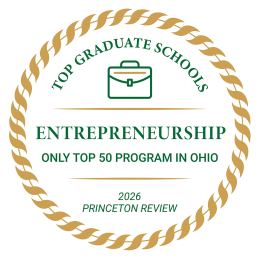FIFA eyes safer working environments with BWI link-up – Inside World Football

Report on FIFA and BWI Partnership for Sustainable Development Goals
Introduction: Formalising a Commitment to Decent Work
The Fédération Internationale de Football Association (FIFA) has announced a five-year strategic collaboration with the Building and Wood Workers’ International (BWI). This partnership formalises and expands upon previous work conducted during the 2022 World Cup in Qatar. The primary objective is to promote and enforce safe and decent working conditions for all individuals involved in the construction and renovation of infrastructure for FIFA tournaments. This initiative directly addresses several key United Nations Sustainable Development Goals (SDGs), particularly those concerning labour rights and institutional accountability.
Alignment with Sustainable Development Goals (SDGs)
The agreement between FIFA and BWI is fundamentally aligned with the 2030 Agenda for Sustainable Development. The partnership’s framework is designed to contribute directly to the following goals:
- SDG 8: Decent Work and Economic Growth: The core of the agreement is to protect labour rights and promote safe and secure working environments for all workers, including migrant workers (Target 8.8). It aims to ensure fair income, workplace safety, and social protection for those building tournament-related infrastructure.
- SDG 16: Peace, Justice and Strong Institutions: By establishing mechanisms for inspections, reporting, and remedy, the partnership seeks to build effective, accountable, and transparent institutions (Target 16.6). It provides a framework for ensuring access to justice for workers who have suffered abuses.
- SDG 17: Partnerships for the Goals: This collaboration is a prime example of a multi-stakeholder partnership (Target 17.17) between a global sports governing body and an international trade union federation, leveraging their combined influence to achieve sustainable development objectives.
Framework and Key Pillars of the Agreement
The five-year agreement is structured around four key pillars designed to translate commitments into measurable actions and improvements for workers, in line with SDG 8.
- Coordinated Labour Inspections: Joint inspections will be conducted at stadiums and other FIFA tournament worksites to monitor compliance with labour standards.
- Training and Capacity Building: The agreement includes provisions for training programmes for workers’ representatives to empower them to advocate for their rights effectively.
- Corrective Action and Remedy: Mechanisms will be established to ensure that any identified abuses are addressed through a time-bound action plan, providing remedy for affected workers.
- Transparent Reporting: Annual progress reports will be published and overseen by FIFA’s Human Rights and Sustainability Sub-Committee to ensure accountability and public scrutiny, supporting SDG 16.
Context and Challenges to SDG Implementation
While the agreement marks a significant step, its implementation faces challenges rooted in past and future tournament contexts.
- Legacy of the 2022 World Cup: The partnership builds on experiences from Qatar, a tournament overshadowed by reports of abuse and deaths of migrant workers. FIFA’s subsequent decision not to act on a recommendation from its own sub-committee for worker compensation raises questions about its commitment to remedy.
- Concerns Regarding the 2034 World Cup: BWI has previously criticised FIFA for awarding the 2034 World Cup to Saudi Arabia, a nation with a contentious labour rights record. BWI has an active complaint with the International Labour Organisation (ILO) against Saudi Arabia concerning the abuse of migrant workers.
- Accountability and Enforcement: A primary challenge will be ensuring that BWI can operate independently to hold both FIFA and host nations like Saudi Arabia accountable for labour abuses, thereby guaranteeing the partnership’s contribution to SDG 8 and SDG 16 is substantive and not merely procedural.
SDGs Addressed in the Article
SDG 8: Decent Work and Economic Growth
- The article’s central theme is the collaboration between FIFA and BWI to promote “decent and safe working conditions” for construction workers. This directly aligns with the goal of ensuring decent work for all. The text explicitly mentions key components of SDG 8, such as “workers’ rights,” “fair income,” “safety in the workplace,” and “social protection.” The focus on migrant workers in Qatar and Saudi Arabia further reinforces this connection.
SDG 16: Peace, Justice and Strong Institutions
- The agreement establishes a framework for accountability and justice. It includes “mechanisms to ensure ‘corrective action and remedy'” for abuses, which relates to ensuring access to justice. Furthermore, the commitment to publish “annual progress reports overseen by FIFA’s Human Rights and Sustainability Sub-Committee” points to the development of more accountable and transparent institutions.
SDG 17: Partnerships for the Goals
- The article is entirely about the formation of a multi-stakeholder partnership. The collaboration between FIFA, a global sports governing body, and Building and Wood Workers’ International (BWI), a global union federation, is a clear example of a partnership designed to leverage combined expertise to achieve common goals related to labor rights and sustainable development.
Specific Targets Identified
Target 8.8: Protect labour rights and promote safe and secure working environments for all workers
- This target is the most relevant. The FIFA-BWI agreement aims to “promote decent and safe working conditions for all workers involved in the construction and renovation of stadiums.” The four pillars of the agreement—joint inspections, training, remedy mechanisms, and reporting—are all practical measures to protect labor rights and ensure a safe working environment, particularly for migrant workers who are mentioned in the context of past and future World Cups.
Target 8.5: Achieve full and productive employment and decent work for all… and equal pay for work of equal value
- FIFA Secretary General Mattias Grafström’s statement that “It is essential that all workers involved in projects connected to FIFA tournaments enjoy… a fair income” directly connects to the principles of decent work and fair remuneration outlined in this target.
Target 16.3: Promote the rule of law… and ensure equal access to justice for all
- The agreement’s provision for “mechanisms to ensure ‘corrective action and remedy’ through a time-bound action plan” is a direct effort to provide access to justice for workers who have suffered human rights or labor abuses. This addresses the historical context mentioned in the article, where FIFA previously ignored recommendations for compensation for migrant workers in Qatar.
Target 16.6: Develop effective, accountable and transparent institutions at all levels
- The commitment to the “publication of annual progress reports overseen by FIFA’s Human Rights and Sustainability Sub-Committee” is a measure to increase the transparency and accountability of FIFA’s operations concerning labor rights. This makes the institution’s efforts and shortcomings publicly visible.
Target 17.16: Enhance the Global Partnership for Sustainable Development, complemented by multi-stakeholder partnerships
- The five-year agreement between FIFA and BWI is a formalization of a multi-stakeholder partnership. It builds on previous informal work and establishes a structured framework for collaboration, sharing knowledge (through inspections and training), and mobilizing resources to achieve the goal of protecting workers’ rights.
Indicators for Measuring Progress
- Frequency and outcomes of joint labour inspections: The article states that “coordinated labour inspections at stadiums and FIFA tournament worksites” are a key pillar. The number of inspections conducted and the issues identified and resolved would serve as a direct indicator of progress.
- Number of workers and representatives trained: The agreement includes “training programmes for workers’ representatives.” Tracking the number of individuals who receive this training would be a measurable indicator of capacity building.
- Number of grievances addressed and remedied: The “mechanisms to ensure ‘corrective action and remedy'” imply a system for filing and resolving complaints. The number of cases handled and the outcomes for workers would be a critical indicator of the system’s effectiveness.
- Publication of annual progress reports: The article explicitly mentions the “publication of annual progress reports.” The timely release and content of these reports serve as a clear indicator of institutional transparency and accountability (related to Target 16.6).
- Frequency of occupational injuries and fatalities: While not explicitly stated as an indicator, the core goal of “safe working conditions” and the historical context of “deaths of migrant workers” in Qatar imply that a reduction in workplace accidents and deaths is a primary measure of success for this initiative (related to Target 8.8).
Summary Table of SDGs, Targets, and Indicators
| SDGs | Targets | Indicators (Implied from the article) |
|---|---|---|
| SDG 8: Decent Work and Economic Growth | 8.8: Protect labour rights and promote safe and secure working environments for all workers.
8.5: Achieve decent work for all… and equal pay for work of equal value. |
|
| SDG 16: Peace, Justice and Strong Institutions | 16.3: Promote the rule of law… and ensure equal access to justice for all.
16.6: Develop effective, accountable and transparent institutions at all levels. |
|
| SDG 17: Partnerships for the Goals | 17.16: Enhance the Global Partnership for Sustainable Development… complemented by multi-stakeholder partnerships. |
|
Source: insideworldfootball.com
What is Your Reaction?
 Like
0
Like
0
 Dislike
0
Dislike
0
 Love
0
Love
0
 Funny
0
Funny
0
 Angry
0
Angry
0
 Sad
0
Sad
0
 Wow
0
Wow
0
















































/environment-climate-change-and-health-(ech)/water-sanitation-hygiene-and-health-(wsh)/landfill-tuvalu-36092.tmb-1200v.jpg?sfvrsn=5c21fe40_1#)

.jpg.webp?itok=0ZsAnae9#)

























